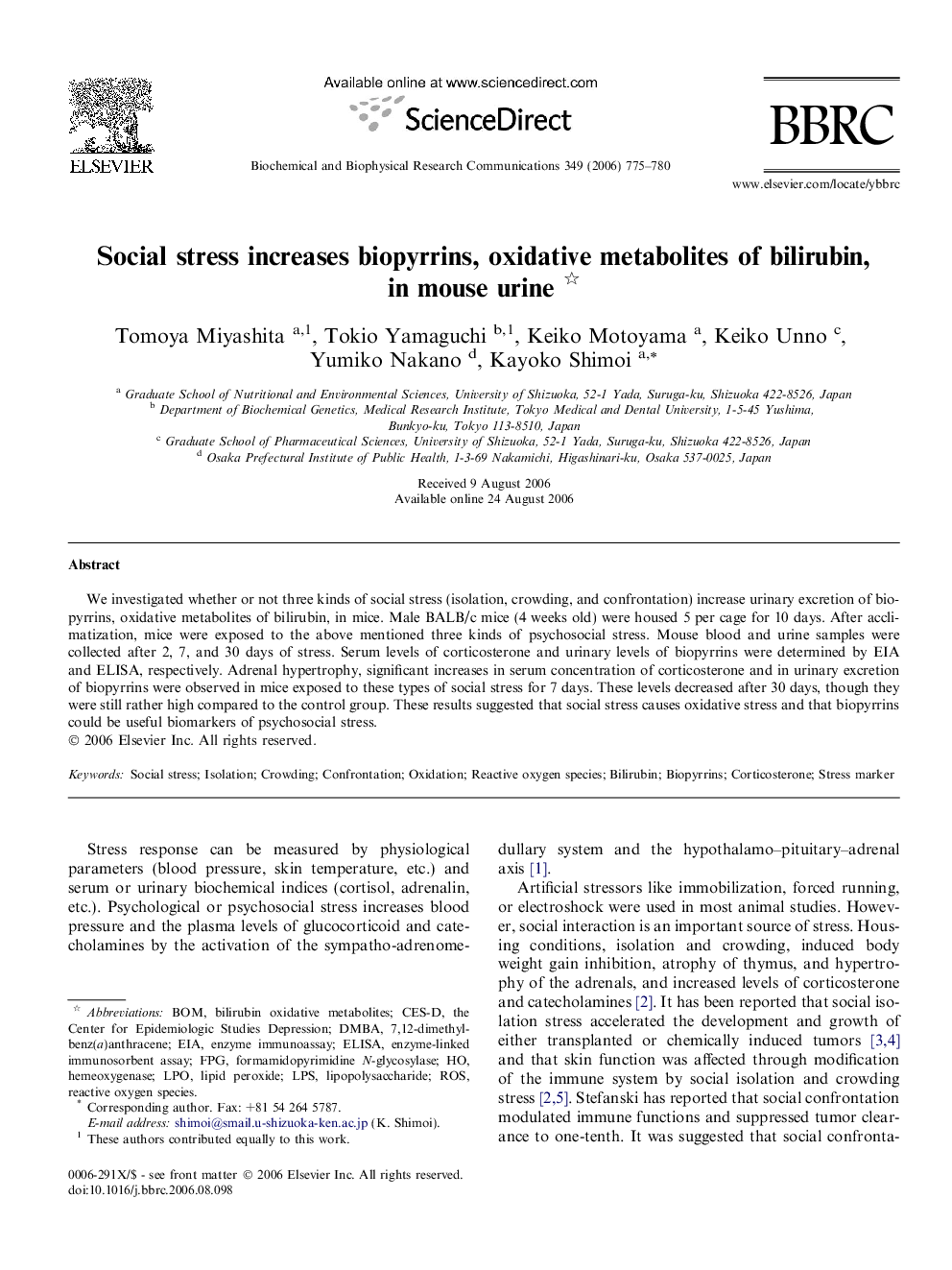| Article ID | Journal | Published Year | Pages | File Type |
|---|---|---|---|---|
| 1938715 | Biochemical and Biophysical Research Communications | 2006 | 6 Pages |
We investigated whether or not three kinds of social stress (isolation, crowding, and confrontation) increase urinary excretion of biopyrrins, oxidative metabolites of bilirubin, in mice. Male BALB/c mice (4 weeks old) were housed 5 per cage for 10 days. After acclimatization, mice were exposed to the above mentioned three kinds of psychosocial stress. Mouse blood and urine samples were collected after 2, 7, and 30 days of stress. Serum levels of corticosterone and urinary levels of biopyrrins were determined by EIA and ELISA, respectively. Adrenal hypertrophy, significant increases in serum concentration of corticosterone and in urinary excretion of biopyrrins were observed in mice exposed to these types of social stress for 7 days. These levels decreased after 30 days, though they were still rather high compared to the control group. These results suggested that social stress causes oxidative stress and that biopyrrins could be useful biomarkers of psychosocial stress.
